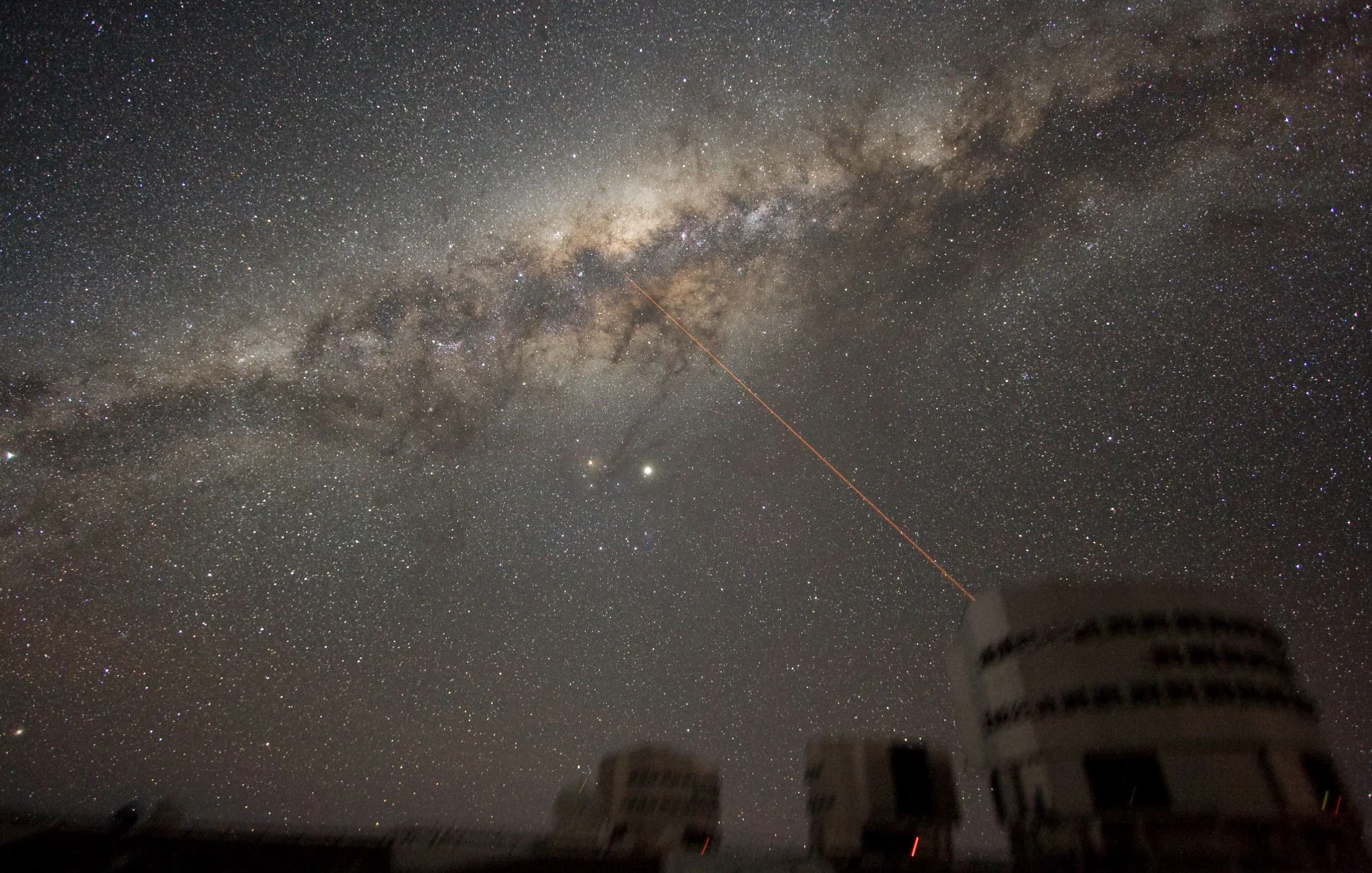Any comments, suggestions or just looking for a chat about this subject? Don't hesitate and leave a comment on our improved comment section down below the article!
By Victoria Scowcroft - University of Bath
Image Credit: ESO/Y. Beletsky via Wikimedia Commons
Imagine trying to map out your home town using only information you could gather from your window. Even with a pair of binoculars you’d find it a difficult task. Mapping out our own galaxy, the Milky Way, is a similarly daunting mission. Unlike other galaxies that we can view from a distance, we sit inside the Milky Way – around 26,000 light years from its center. This means that when we try to look at the opposite side of the galaxy, much of our view is blocked by the stars and dust in between.
But on April 25, our view of the Milky Way became much clearer. The European Space Agency’s Gaia satellite provided us with positions, distances and motions of 1.3 billion stars measured to a higher precision than ever before. Now this same data has helped researchers work out how our galaxy filled up with a considerable amount of its stars. The results have just been published in Nature.
Gaia, which aims to chart the stars in the Milky Way in unprecedented detail, has a resolution comparable to being able to measure the width of a human hair on top of the Empire State Building. But in this scenario, Gaia wouldn’t be down on the New York streets, squinting up 443 meters to the top of the tower. It is the equivalent of being sat on the roof of Buckingham Palace in London, staring out more than 5,500 kilometers across the Atlantic Ocean.
Funny moving stars
The team of astronomers behind the new study, from the Netherlands and France, discovered stars with retrograde motions – moving in a different direction to the majority of the galaxy’s stars. They suspected that this could be the debris from a collision between the Milky Way and another galaxy ten billion years ago. This second galaxy would have been a smaller “satellite” companion of the Milky Way, travelling around it.
An image of galaxy UGC 12158, which is thought to resemble the Milky Way in appearance. - Image Credit: ESA/Hubble & NASA
Collisions of galaxies are dramatic events. They reshape large galaxies and can entirely consume smaller galaxies. In fact, this has happened before, with the debris from satellite galaxies caught up in the Milky Way’s gravitational pull often seen as a stream of stars, tracing out the orbit of the ill-fated satellite. However, ten billion years is a long time (even for astronomy) – long enough to scatter the debris from a merger all over the sky, rather than just in a clear stream.
So while the discovery of a collection of oddly rotating stars scattered over the whole sky is interesting, the scientists couldn’t be sure these stars were actually associated with each other. To find out, they decided to compare the chemical properties of the stars with the remaining ones in the Milky Way.
Chemical clues
The team used spectroscopic observations from the APOGEE-2 survey – which measures the amounts of different elements in individual stars. Measurements of heavy elements were essential, as we know that these are formed when stars explode as supernovae, filling the interstellar medium of a galaxy. Exactly which element is formed depends on the star. Alpha elements – formed by combining multiple helium atoms – are created in explosions of massive, rapidly evolving stars, while iron is formed in supernovae from star systems where two stars orbit each other.
We know that the fraction of alpha elements in a galaxy decreases with time, while the fraction of iron increases. By comparing the trends for the retrograde stars with stars in the Milky Way’s disk components, it was clear that the retrograde stars must have formed in a system with a different chemical composition. Adding in this extra piece of the puzzle makes it clear that they were originally a separate galaxy.
The authors have named the crashing satellite galaxy “Gaia-Enceladus”, which is very fitting. In Greek mythology, Enceladus was a child of the gods Gaia and Uranus. It was one of the giants, buried under Mount Etna, where it caused earthquakes disrupting the land.
Similarly, Gaia-Enceladus was a giant compared to most of the Milky Way’s current satellites – it would have had a mass around one quarter of the Milky Way’s at the time of the merger. It shook the Milky Way, changing the structure of the galactic disk, setting off bursts of star formation in its wake. Like Enceladus the giant, Gaia-Enceladus was buried, hidden deep inside the galaxy. If Gaia could dig out the remains of this event that happened ten billion years ago, it is exciting to think what else it will uncover.
Source: The Conversation
If you enjoy our selection of content please consider following Universal-Sci on social media:











